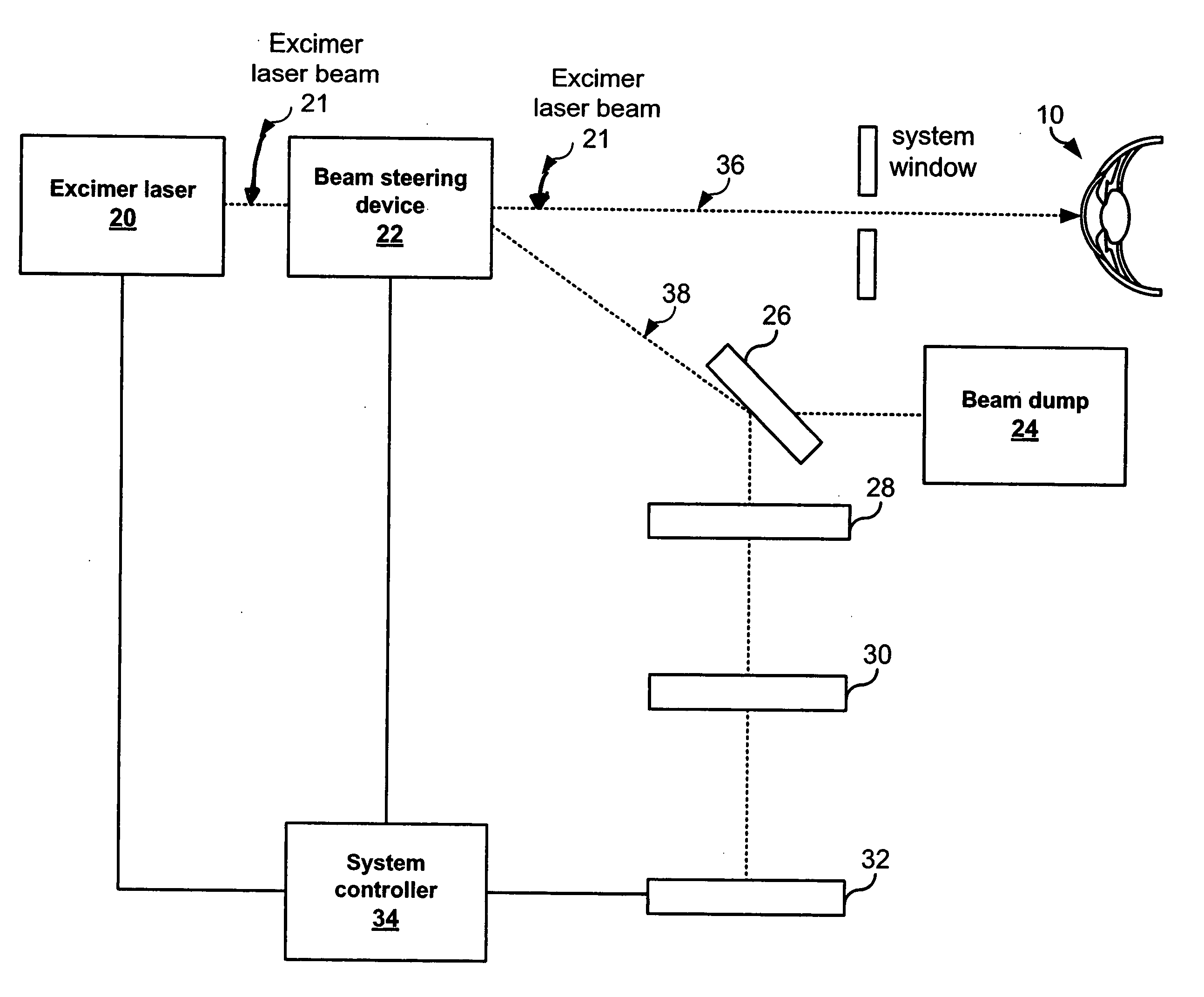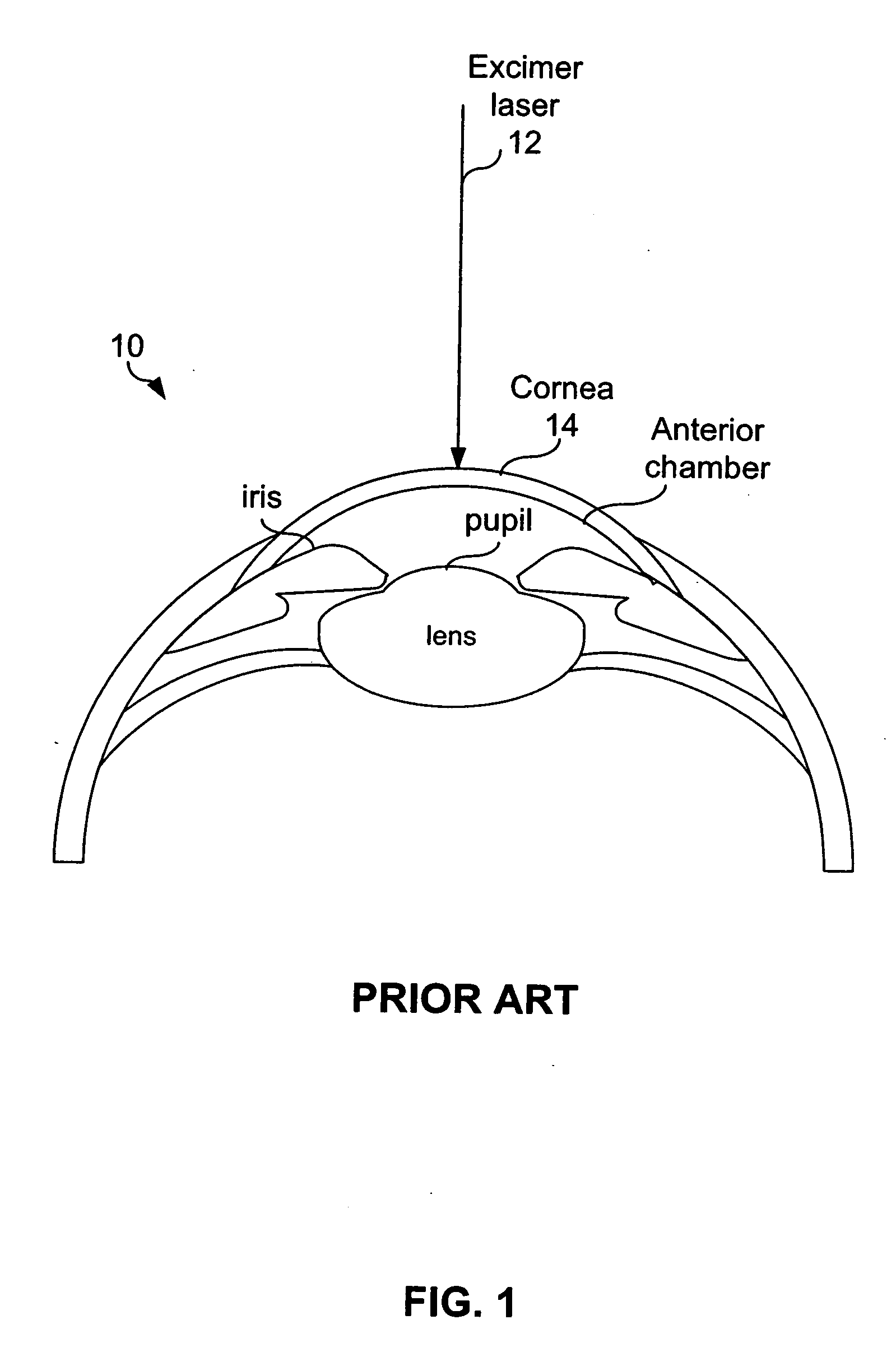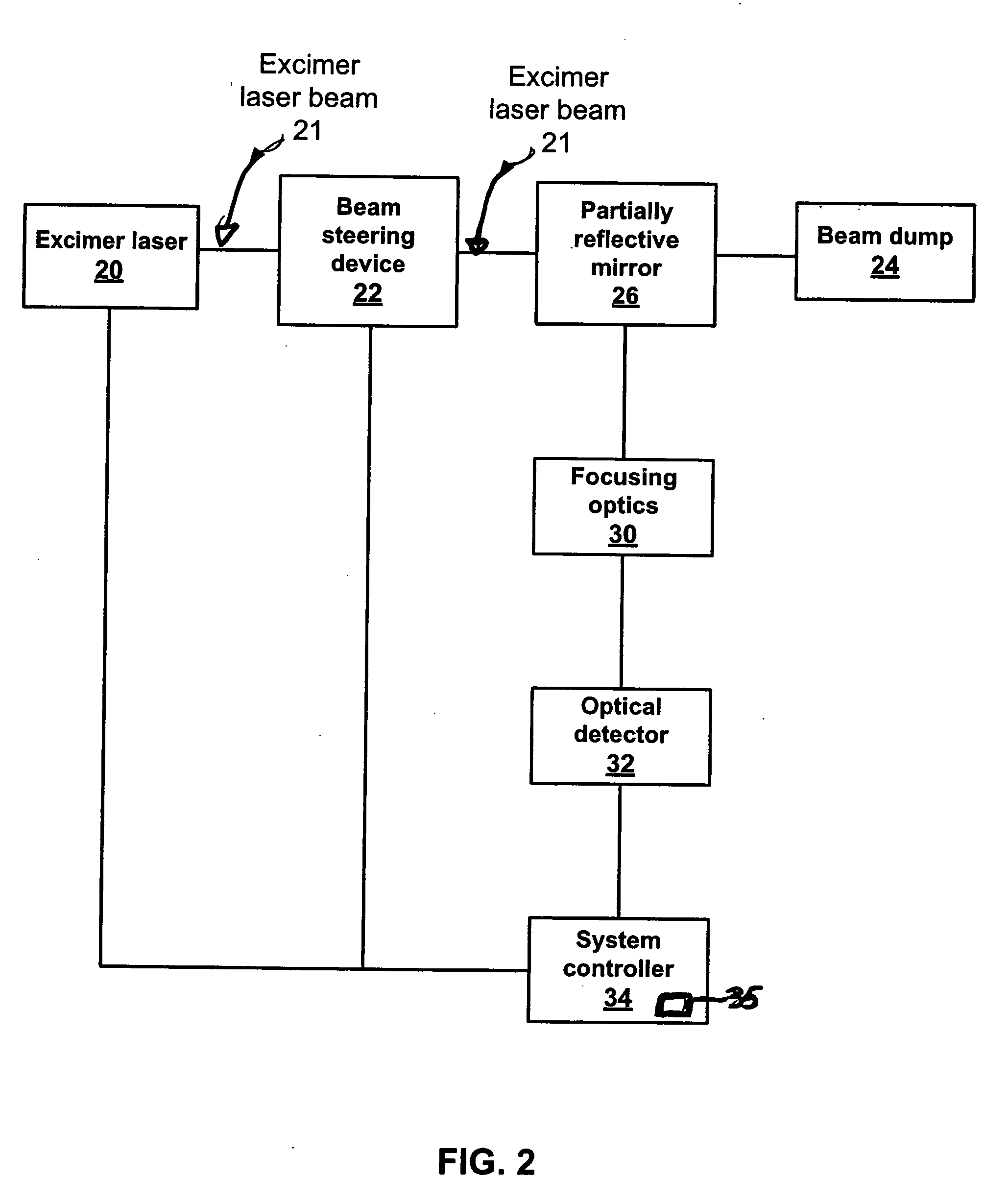System and method for automatic self-alignment of a surgical laser
a laser and surgical technology, applied in the field of lasers, can solve the problems of affecting the accuracy of positioning the laser beam at the desired location within the patient's eye, and the most time-consuming portions of the laser vision correction procedure, so as to facilitate the alignment of the laser beam, simplify the setting up of the surgical laser, and reduce the intensity of the laser beam
- Summary
- Abstract
- Description
- Claims
- Application Information
AI Technical Summary
Benefits of technology
Problems solved by technology
Method used
Image
Examples
Embodiment Construction
[0020] Preferred embodiments of the present invention are illustrated in the FIGUREs, like numerals being used to refer to like and corresponding parts of the various drawings.
[0021] Embodiments of the present invention substantially address the problem of laser beam misalignment associated with a refractive vision correction procedure performed using a laser, such as an excimer laser. For example, thermal drift associated with galvanometer scanner systems used to position a surgical laser beam can effectively misalign the treatment beam used for such a procedure. Misalignment of the treatment laser beam would likely result in what is referred to as a “de-centered ablation”. Angular drift within a laser itself produces a similar phenomenon. Embodiments of the present invention address both galvanometer and laser drift by providing for automatic alignment of the origin location of a laser vision correction system using a quad-cell, CCD or other like optical detector.
[0022] In perfo...
PUM
 Login to View More
Login to View More Abstract
Description
Claims
Application Information
 Login to View More
Login to View More - R&D
- Intellectual Property
- Life Sciences
- Materials
- Tech Scout
- Unparalleled Data Quality
- Higher Quality Content
- 60% Fewer Hallucinations
Browse by: Latest US Patents, China's latest patents, Technical Efficacy Thesaurus, Application Domain, Technology Topic, Popular Technical Reports.
© 2025 PatSnap. All rights reserved.Legal|Privacy policy|Modern Slavery Act Transparency Statement|Sitemap|About US| Contact US: help@patsnap.com



